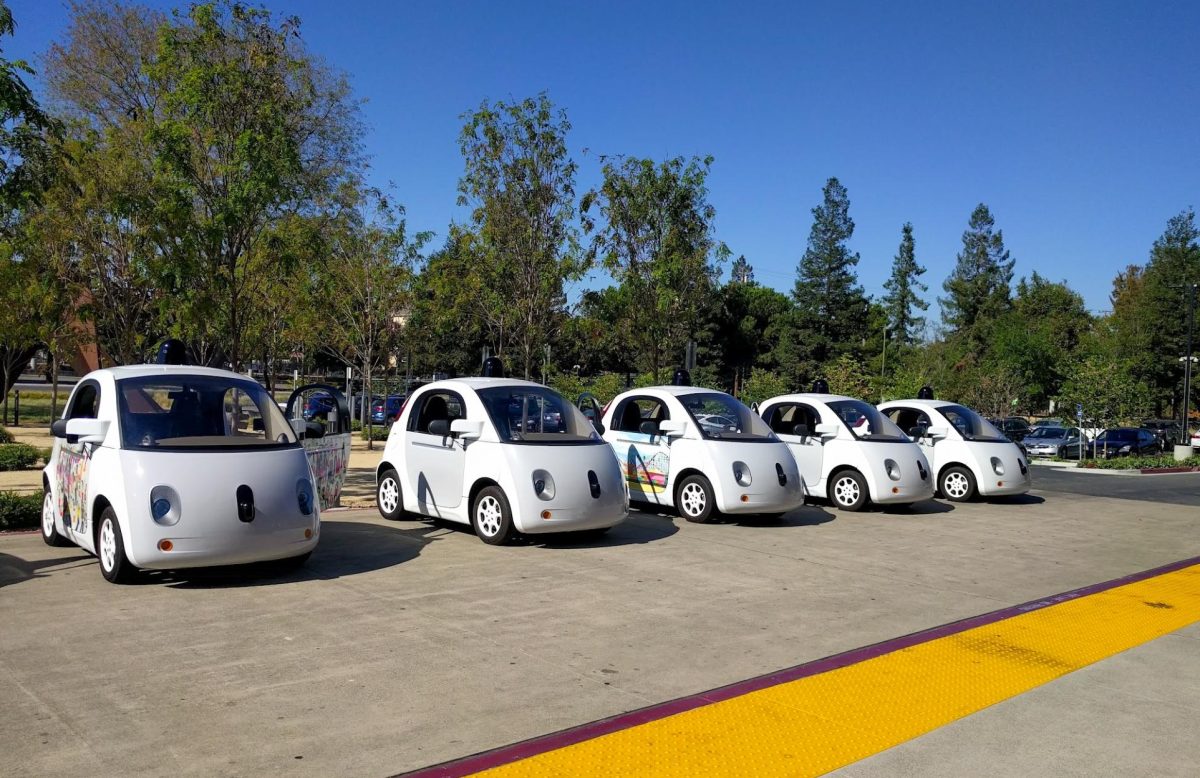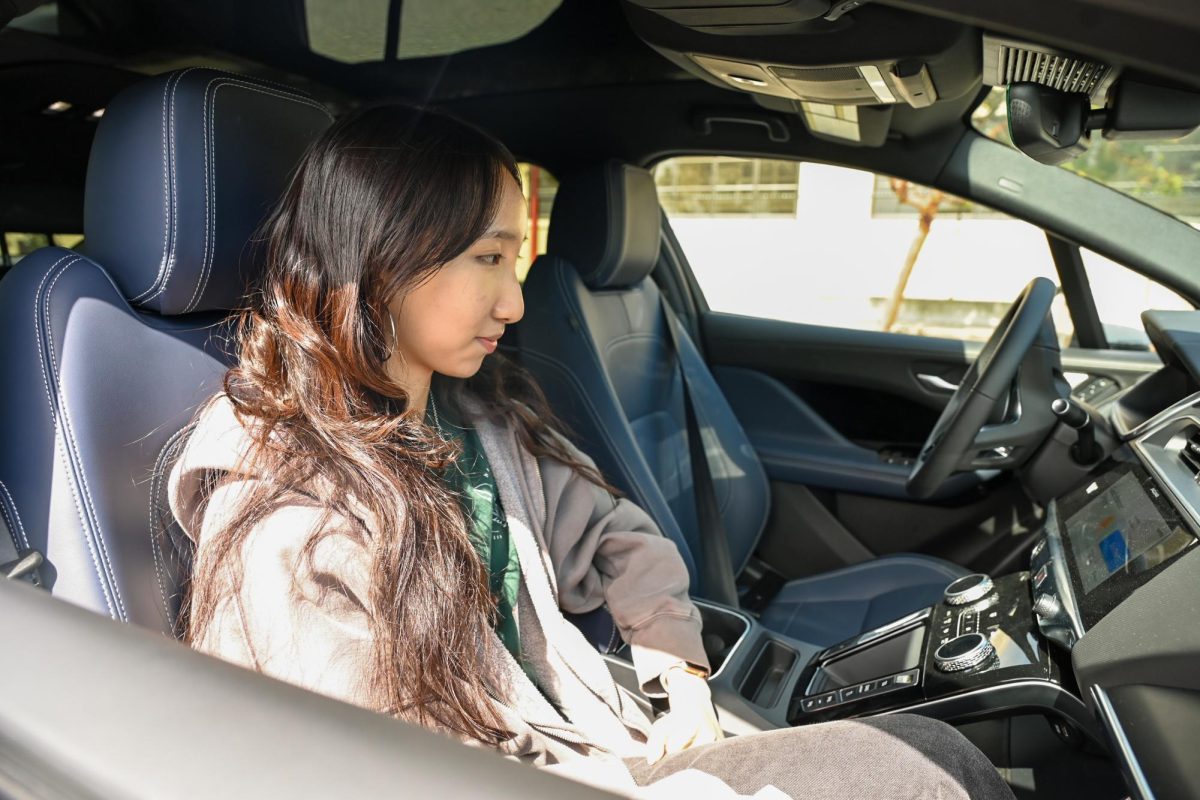Every day, the average American spends roughly an hour behind the wheel, facing a one-in-107 chance of dying in a car crash. For some drivers, self-driving cars promise a safer and less time-consuming option for transportation.
While many car companies like Tesla incorporate self-driving features in their vehicles, most experts consider Waymo the leader in the self-driving car industry.
Waymo originated as a branch of Google, which pioneered the self-driving car in 2009 and advertised the project as “the world’s first fully driverless ride.” Then, CEO John Krafcik split the company off from Google in 2016, renaming it Waymo.
“Everyone should be able to get around independently,” Waymo Communications Manager Julia Ilina said. “Autonomous vehicles can plug transit gaps for people who don’t have convenient access to public transit or personally owned vehicles, including people with disabilities and underserved communities.”
Although some doubt the safety of self-driving cars due to technological failures, many argue that it could in turn provide a safer alternative by removing human error. Senior Gia Emilie rode in a Waymo car in the company’s parking lot six years ago.
“The cars have a lot of sensors, and you can see on the screen that they had everything fully mapped out,” Gia said. “There’s a lot of potential to minimize accidents and traffic, especially at some point in the future if the roads are full of all self-driving cars. It’s all about what you feel safer with.”
Self-driving car companies aim to hold safety to high standards. In their first 22 million miles, Waymos had 73% fewer injury-causing crashes than the average human driver.
Still, self-driving cars face heightened scrutiny from outside sources, mirroring the panic of the early 1900s when cars began to replace horse-drawn carriages as the main mode of transport. Today, 93% of Americans have concerns about self-driving cars.
Computer science teacher Anurada Datar appreciates the fact that advances in technology are being made, but she worries about the unique vulnerabilities of computer-driven cars.
“I fear that it will lead to too much automation out on the streets,” Datar said. “With any automation, there are always hackers trying to break things. I’m sure the people working on these self-driving cars have a very positive intention behind creating them, but they’re also vulnerable to all of these bad things that could happen.”
To counter this issue, Waymo keeps its cars offline and uses local computers to store essential information for them to use. Nevertheless, this is only a temporary solution, and the company will have to create more robust security as its impact expands.
“Full autonomy is one of the most complex engineering challenges of our times — it’s the software equivalent of putting a man on the moon,” Ilina said. “Not only does the technology have to work, but you need to be able to evaluate its safety and build a sophisticated set of operational capabilities.”


















![“[Building nerf blasters] became this outlet of creativity for me that hasn't been matched by anything else. The process [of] making a build complete to your desire is such a painstakingly difficult process, but I've had to learn from [the skills needed from] soldering to proper painting. There's so many different options for everything, if you think about it, it exists. The best part is [that] if it doesn't exist, you can build it yourself," Ishaan Parate said.](https://harkeraquila.com/wp-content/uploads/2022/08/DSC_8149-900x604.jpg)




![“When I came into high school, I was ready to be a follower. But DECA was a game changer for me. It helped me overcome my fear of public speaking, and it's played such a major role in who I've become today. To be able to successfully lead a chapter of 150 students, an officer team and be one of the upperclassmen I once really admired is something I'm [really] proud of,” Anvitha Tummala ('21) said.](https://harkeraquila.com/wp-content/uploads/2021/07/Screen-Shot-2021-07-25-at-9.50.05-AM-900x594.png)







![“I think getting up in the morning and having a sense of purpose [is exciting]. I think without a certain amount of drive, life is kind of obsolete and mundane, and I think having that every single day is what makes each day unique and kind of makes life exciting,” Neymika Jain (12) said.](https://harkeraquila.com/wp-content/uploads/2017/06/Screen-Shot-2017-06-03-at-4.54.16-PM.png)








![“My slogan is ‘slow feet, don’t eat, and I’m hungry.’ You need to run fast to get where you are–you aren't going to get those championships if you aren't fast,” Angel Cervantes (12) said. “I want to do well in school on my tests and in track and win championships for my team. I live by that, [and] I can do that anywhere: in the classroom or on the field.”](https://harkeraquila.com/wp-content/uploads/2018/06/DSC5146-900x601.jpg)
![“[Volleyball has] taught me how to fall correctly, and another thing it taught is that you don’t have to be the best at something to be good at it. If you just hit the ball in a smart way, then it still scores points and you’re good at it. You could be a background player and still make a much bigger impact on the team than you would think,” Anya Gert (’20) said.](https://harkeraquila.com/wp-content/uploads/2020/06/AnnaGert_JinTuan_HoHPhotoEdited-600x900.jpeg)

![“I'm not nearly there yet, but [my confidence has] definitely been getting better since I was pretty shy and timid coming into Harker my freshman year. I know that there's a lot of people that are really confident in what they do, and I really admire them. Everyone's so driven and that has really pushed me to kind of try to find my own place in high school and be more confident,” Alyssa Huang (’20) said.](https://harkeraquila.com/wp-content/uploads/2020/06/AlyssaHuang_EmilyChen_HoHPhoto-900x749.jpeg)











